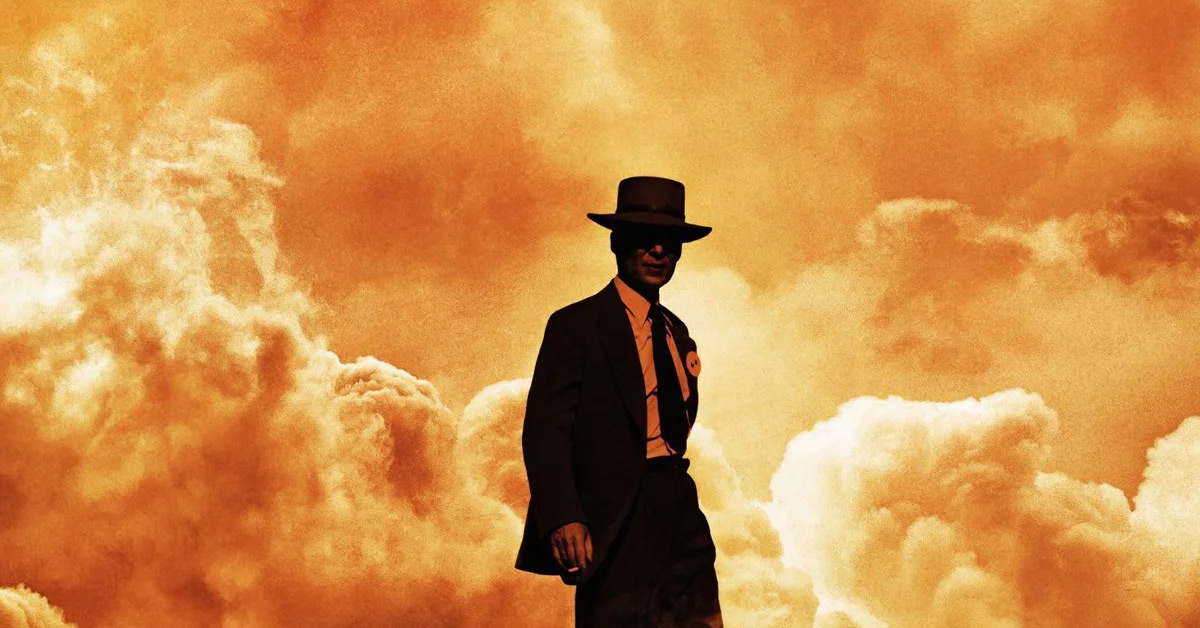How do you go about telling the most terrifying story about war, raw humanity, genius and political mire?
Christopher Nolan tackles this brilliantly in his truly stunning Oppenheimer. Three hours may sound like a long film but when you are seeing it, in its diamond-sharp non-linear editing, you will not just feel that time is fleet, but that the film is actually taking you back in time, as seen through the tortured genius of Robert J. Oppenheimer.
Nolan doesn’t waste your time telling the story you know – that Oppenheimer was the “Father of the Atomic Bomb” and the weapon he and his team created killed hundreds of thousands of people and is “credited” with ending Japan’s participation in the Second World War. That is, of course, at the core of the awful history, but Nolan’s retelling of the story is done through the extraordinary cinematography of Hoyta van Hoytema’s capture of the exquisite turmoil of genius portrayed through the face, particularly the eyes, of Cillian Murphy as Oppenheimer. The knife-edged cheek bones of Oppenheimer, his calm but haunted eyes, hide the inner workings of the man’s mind and his raw human needs. The performance is extraordinary, understated and powerful.
Blending with this is a recurring motif of Oppenheimer mentally visualizing atoms splitting, chain reactions firing, memories of things from the man’s past and nightmare images of the future he was creating. This is as close to actually seeing inside Oppenheimer’s mind as one might ever get, a glimpse of genius told by a genius.
The film darts back and forth between color and a black and white technique specifically developed for IMAX viewing of this movie. The storyline glides between the tumultuous personal relationships of Oppenheimer with the despicable politics of Lewis Strauss, the Chairman of the Atomic Energy Commission. The movie has an amazing cast, each of whom morphs so well into their roles they are barely – if at all – recognizable as the thespians they are. Emily Blunt portrays Oppenheimer’s wife Kitty and fills the character with a transcendent depth. Florence Pugh is Jean Tatlock, Oppenheimer’s mistress, an incendiary device of an altogether different kind. Robert Downey, Jr. plays a vindictive and petty Strauss with every fiber of his being. Matt Damon is Lt. General Leslie Groves who oversaw the creation of the Pentagon and the Manhattan Project. There is Kenneth Branagh as Neils Bohr, Tom Conti as Albert Einstein… the A-List goes on, and it’s marvelous.
The scenes where director Christopher Nolan shows us Trinity – the actual test detonation of the bomb – are nail-biting and the visuals of the explosion will burn the images of tension, fear, hope and horror in your mind.
Ludwig Goransson’s wall-to-wall music is the perfect accompaniment to the exceptional dialogs and the human and scientific drama, never stepping on the action but deepening the meaning of the scenes.
We do not always know our history, and we rarely, if ever, know the real people who are the creators of the things that define our civilizations, our politics and ultimately, our lives. Nolan’s Oppenheimer is a watershed film, not just as it is his first biopic, or that it features a new filming technique, or has an extraordinary cast. It is a film that takes history and makes it human. From the dark interplay between science and politics to the searing interplay of the lives of the very real people whose lives are being put on the screen, it is a different way of telling a story. This is the stuff cinematic history is made of.

